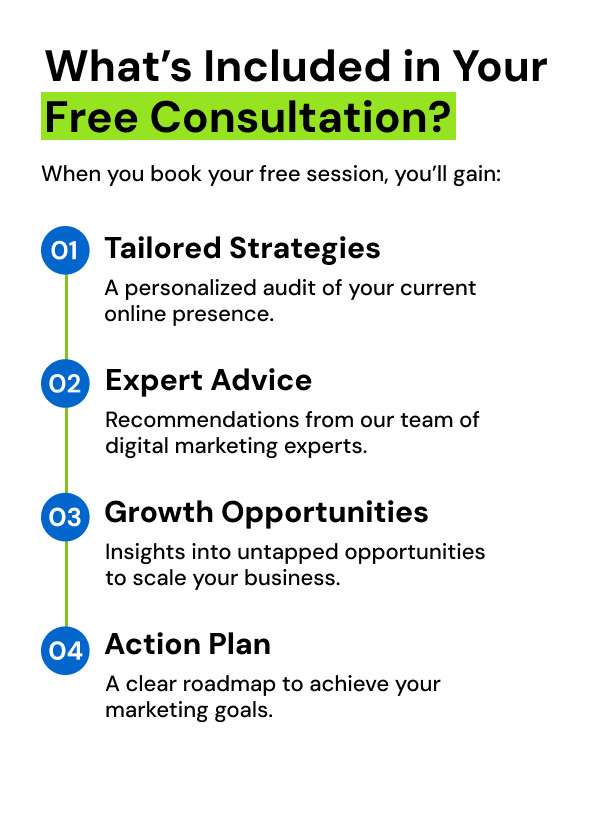Web browsers have been our steadfast, loyal window to the digital landscape for years. The fundamental job of web browsers to aid digital branding, from Netscape Navigator to Google Chrome, has been to bring and display web pages. After typing the keywords into the search bar, users would sift through a list of blue links and do all the heavy lifting on their own. Now that era seems to come to a close. With the emergence of the new generation of AI-powered browsers, users’ relationship with the internet is undergoing a promising transformation from manual search to intelligent conversation.

Apart from being standard browsers with a few AI extensions added, the AI web browsers have been developed from the ground up, with artificial intelligence at their core. While these AI web browsers are mining information, they are also equally capable of understanding, synthesizing, and presenting it effectively. In this guide, we have briefed the world of AI browsers important to an AI digital marketing agency, from the pioneering “answer engines” to the future of “AI-driven commerce”.
Key Takeaways
- AI browsers have become smarter gatekeepers
AI browsers are not only displaying the pages, they are interpreting, summarizing and personalizing web content.

• Proven keywords and content strategies to improve search rankings
• Drive consistent growth, generating qualified organic traffic.
• Optimize digital presence to strengthen brand credibility.
Book a Call- From search to answers
AI browsers deliver direct insights. Hence, users depend less on search engines. - Contextual intelligence
AI browsers understand intent, not only the keywords. Hence, AI produces highly relevant results. - Productivity boosters
User efficiency is being redefined by automated summarization, voice queries and task integration. - The new SEO frontier
Brands have to adapt to ensure both humans and AI browsers are easily digesting their content.
What does AI Browser mean?
An AI browser is tasked with reimagining the entire process of accessing information online. It will not act as a simple file-fetcher; instead, it will perform the role of a research assistant. The core point of distinction is its ability to process natural language and understand context.
For instance, when the users are conducting research on sustainable energy sources, this is the picture:
Traditional Browser:
The search is for “advantages of solar power”. The user opens five tabs, skims each article for key points, and then manually compiles their notes.
AI Browser:
The user asks the search engine, “What are the main advantages and disadvantages of solar power, and which countries are leading in its adoption?” After scouring the Web, the browser reads multiple sources and returns a concise, synthesized answer complete with citations.
These AI web browsers have been developed using Large Language Models (LLMs) – the same technology employed by ChatGPT. This enables them to move beyond the keywords to comprehend content, so that the Web can work for the users, and not the other way around.
What are the core features powering the search revolution?
AI browsers are distinguished from traditional browsers by a series of robust features that extend beyond simple search.
a. Conversational search and summarization
The basis of the AI browser is that it is capable of asking complex questions in simple English. The AI provides direct answers. Often, it summarizes lengthy articles, technical papers, and user reviews into easy-to-understand bullet points.
b. Proactive organization
Many AI browsers are capable of automatically organizing digital life. For instance, Arc Browser utilizes “Spaces” to separate work from personal projects. Opera One’s “Tab Islands” feature can automatically group related tabs. Through this AI-driven clustering, clutter is reduced and focus improves.
c. Creating content on-the-fly
When users need to draft a professional email or a social media post based on the article they are reading, integrated AI assistants, such as Microsoft Copilot or Brave’s Leo, can do it directly within the browser window.
d. Contextual understanding
All these AI web browsers can understand the content that users are reading on the page. Highlighting a technical term, the users can ask for an explanation, or ask the browser to “summarize” the key arguments on this page, without having to leave the tab.

The key players in the AI Web Browser space
This field’s rapid expansion is welcoming both new startups and established big names vying to define the Browse’s future.
1. Perplexity
Perplexity is often termed as “Answer Engine”. This tool excels at providing direct, accurate answers with in-line citations. After users ask a question, it provides links and a comprehensive summary synthesized from top sources. Perplexity Comet is its latest fast and conversational model that has been designed for real-time dialogue, so that research feels like a conversation with an expert.
2. Arc Browser
Arc, from the Browser Company, has gained a cult following for its fresh user interface, replacing the top bar with a dynamic sidebar. Its AI features, branded “Arc Max”, are capable of renaming the tabs and downloaded files for clarity, generating 5-second previews of links by hovering over them. It allows users to ask questions directly about the webpage they are visiting.
3. Microsoft Edge
With Copilot being integrated (as is powered by OpenAI’s GPT models) directly into the sidebar, Microsoft has introduced AI Browse to the mainstream. With DALL-E 3, the edge users can summarize pages, compose texts and also generate images. They don’t need any separate tool. Being deeply integrated with the Windows OS, it is now a powerful, built-in assistant.
4. Google’s AI in Chrome
Since Google is the world’s most popular browser, Chrome’s onset into AI bears immense significance. Apart from a single mode, Google has embedded a suite of experimental AI features powered by its Gemini models. It comprises a “Tab Organizer” that automatically creates groups, a “Help me write” tool to compose texts anywhere on the Web, and AI-generated browser themes. Through these features, generative AI capabilities are directly brought into the familiar Chrome experience.
5. Brave Browser
Brave is a compelling alternative for all privacy-conscious users. By integrating its native AI assistant, Leo, it helps users by summarizing pages and answering questions similar to its competitors. Focus on privacy is Brave’s key differentiator. Leo’s requests are proxied to anonymize user data. For model training, it does not make use of conversations. Hence, it offers a more private AI experience.
6. Opera One and the Vision of Opera Neon
Opera has rebuilt its flagship browser as Opera One, which is centered around its native AI assistant Aria as well as an innovative “Tab Islands” feature for contextual grouping. Nevertheless, Opera’s spirit of innovation had been showcased long ago with the introduction of Opera Neon. It was released as a concept browser in 2017, and Neon evolved into a visionary experiment, rather than a daily-use product. Featuring a physics-based engine, chat-bubble-like tabs and a split-screen mode, Opera Neon could predict the highly visual and integrated future which browsers now prefer. Neon had been a glimpse into the future, and its DNS can be noticed in the dynamic designs of present-day AI browsers.
7. SigmaOS
This browser functions as the productivity workspace. It has been exclusively built for macOS. SigmaOS treats the browser as the operating system for users’ work, hence it is taking a radical approach. It has completely eliminated the traditional horizontal tabs in favour of “Workspaces”. Pages are in vertical organization inside a workspace, almost similar to a task list. Users can mark pages as “done” to clear them or “snooze” them for later. This design fosters a more deliberate and focused workflow. Airi is its AI companion, which is seamlessly integrated into this structure. As the users press a keyboard shortcut, they can ask Airi to summarize the page they are on, draft an email reply, or explain a complex topic. This is how it effectively acts as the co-pilot for productivity within its highly structured environment.
Let us talk about your project goals
- Designing brand strategy
- Brand identity development
- Market research & competitor analysis

The next step – From generating information to action with ChatGPT shopping
AI’s ultimate goal is to move beyond retrieving information to performing actions on behalf of users. Here, features such as AI-powered shopping assistants are needed, even if it is not a standalone browser. The capabilities demonstrated by models like ChatGPT point to the future of E-commerce within the browser.
For instance, while looking for a new pair of running shoes – other than manually comparing dozens of models across various retail sites, the users can simply tell the browser to “Find a neutral running shoe for marathon training under $200, with good cushioning. Compare the top 5 options and summarize their reviews”.
Then the AI will –
- Start scanning multiple E-commerce sites
- Filter the products based on specific criteria (neutral, cushioning, and price)
- Read and synthesize numerous user reviews
- Provide a comparison table that highlights the pros and cons of the top five models
This is how the browser is transformed from a passive portal into an active, intelligent shopping agent that is time-saving and helps users make better decisions.
Wrapping up
The users are presented with a smarter partnership with the Web. AI web browsers represent a fundamental shift in how users interact with information. They are converting the chaotic, sprawling Web into a coherent, personalized resource. AI handles the tedious work of searching, filtering, and summarizing to keep users’ cognitive energy free to focus on what truly matters – understanding, creating, and making informed decisions. The journey from simply clicking on a link to sophisticated, AI-driven conversations and actions is well underway. Now, the browser is not only restricted to a window, but it has also become an intelligent partner for navigating the digital world.







